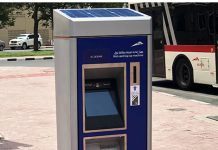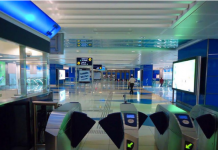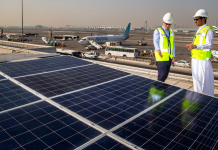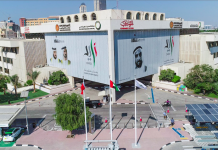HE Mattar Al Tayer, Director-General and Chairman of the Board of Executive Directors of Roads and Transport Authority (RTA) has endorsed the map of RTA’s Artificial Intelligence Strategy, which is aligned with the UAE Artificial Intelligence Strategy 2030, the 50-Year Charter, Smart Dubai 2021, and RTA’s Digital Strategy. The map is considered a standard guide and methodology of RTA related to the introduction of artificial intelligence technologies and solutions in future.
“The endorsement of the strategic map of Artificial Intelligence (AI) is in line with the government’s drive to lead the way of the fourth industrial revolution through offering services based on AI solutions; which will reduce expenses and maximise revenues. The map consists of three key pillars or focus areas. The first pillar’s focus area covers mobility in Dubai, licensing services, planning and regulating safety and risks, customer’s experience, internal services, assets and maintenance, and knowledge and innovation,” said Al Tayer.
The second pillar focusses on abilities; a key ingredient of success. It starts with diffusing the culture of AI, promoting governance in collaboration with Smart Dubai, integrating initiatives with other strategic drivers such as blockchain, internet of things, and data management, among others. It focuses on developing certain abilities such as RTA’s AI Master Plan, and the improvement of the corporate platform of AI.
“The third pillar relates to strategic performance indicators aligned with the objectives of the UAE AI Strategy 2031 aimed at achieving 100% reliance on AI in services and data analysis by 2031. Two strategic indicators are measured here, namely the percentage of reliance on AI in delivering RTA’s services and in data analysis,” he explained.
RTA started early in using AI in projects undertaken highlighted by Dubai Metro, which has an automated operation and control process covering automated planning and scheduling using AI at the Enterprise Command and Control Center (EC3). The system contributed to reducing operational costs by 7% and improving on-time journeys by 6.4%. AI is used at the EC3 in the treatment of big data, simulators, forecast of traffic and crowds and self-learning feature. It uses sophisticated smart tools capable of handling 75 million data logs per day. These technologies helped RTA in smart mobility planning, improving transport efficiency, and enhancing customers’ experiences.
RTA used AI technology in drones to list and classify RTA’s assets, monitoring traffic movement as well as emergencies and accidents. AI is also used in smart cameras to monitor misuse of dedicated bus lanes, and the smart testing yards (14 sites). It is also used in the smart pedestrian crossing signals (15 sites) where the system can, through the smart sensors, increase or abolish the time allocated to pedestrians, based on the intensity of people movement.
AI technology is also used serving customers examples include the chatbot (Mahboub), happiness indicator, and virtual personal assistant responding to customer queries. The technology is used in monitoring employees such as Raqeeb system monitoring the performance of drivers on duty through cameras fitted on board and sensors that alert drivers who seem to be exhausted or distracted by other matters.
Source: RTA





















